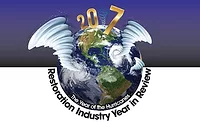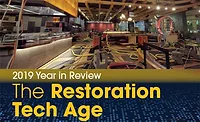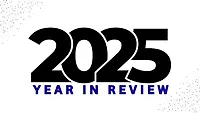The 2020 Restoration Industry Year in Review | The Great Unknown
Industry leaders look at what’s happened in 2020, and predict what’s ahead of the restoration industry.
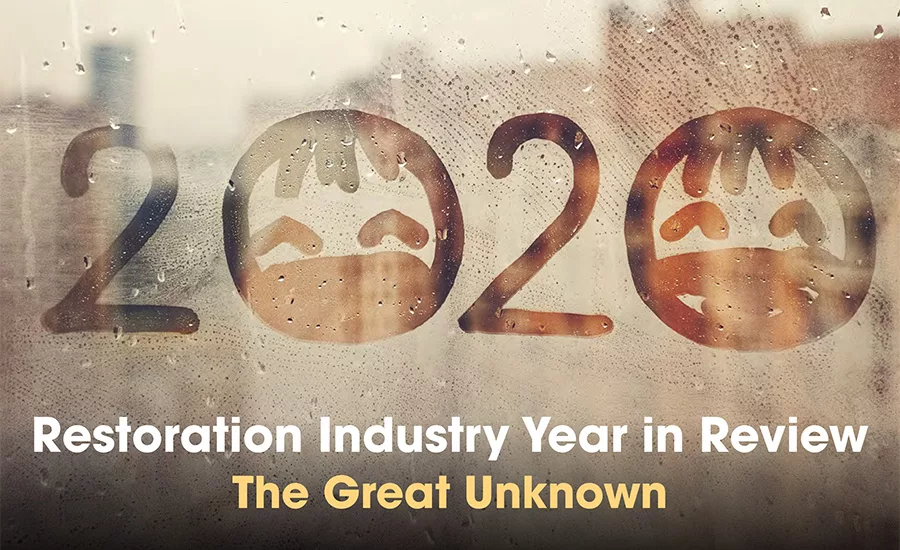
A few words from the Editor: Every December, R&R wraps up the calendar year with a Year in Review. I am here to sum it up for you in one word: Coronavirus. This was the year of a multitude of unknowns. Yet, per usual, restorers put on their boots and got to work. The virus wasn’t the only challenge. According to the National Centers for Environmental Information, “the first nine months of 2020 ties the annual record for 16 events that occurred in 2011 and 2017.” Additionally, this is the sixth year in a row in which the U.S. has seen 10 or more billion-dollar weather-related disasters. As of Nov. 17, here is just a snippet of some of the weather events in the U.S. this calendar year:
- 13 hurricanes
- 30 tropical storms (record high)
- 31 tropical depressions (tied for record)
- Wildfires in at least 8 states
- A drought
- 3 tornado outbreaks
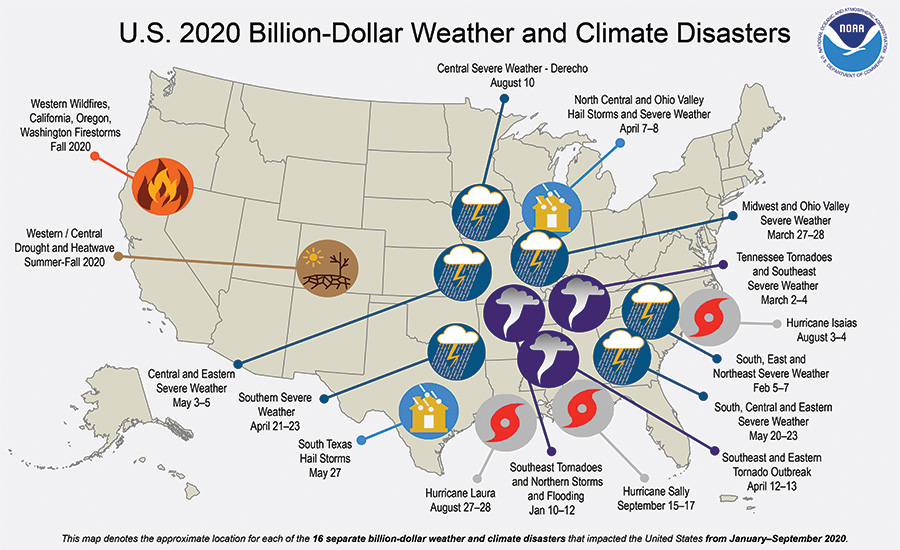
*Click the map to see the image in greater detail.
Now, I’m going to hand it over to the experts to sum up the rest. I reached out to a handful of industry thoughts leaders from every corner of the industry – software, networks, legal issues, insurance, industry associations, estimators, franchisors and independent contractors, etc. Each was asked to answer three questions dealing with new trends, lessons from 2020, and tips for thriving beyond the year of the pandemic.
Meet the Experts
Click the authors to learn more about them, their industry involvement, and check out articles they’ve authored in R&R.



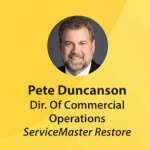
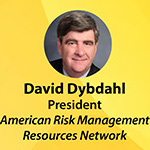






What is the biggest new trend or change you’ve seen in the restoration industry this year?
Dan Cassara: Adoption of better technologies to adapt to the future of restoration. This is everything from 3D camera technology to communications tools to more effectively communicate with customers during and post the COVID-19 crisis.
Edward Cross: The biggest new trend is coronavirus cleanup and disinfection. Many companies that were ready for it prospered if they were properly equipped and did not over-sell their capabilities or the efficacy of their products.
Ross Driscoll, Jr.: Given the pandemic, the need for restoration contractors to have coverage for “Virus” within their Pollution policy is critical. Many carriers have a COVID-19 exclusion, where there are only 3 insurance carriers that have a positive grant of coverage for “Virus”.
Pete Duncanson: Responding to COVID related request and understanding disinfection products and protocols.
David Dybdahl: The risk and insurance issues surrounding COVID 19 became al- consuming to for ARMR Staff of insurance brokers and underwriters.
New legally defensible cleaning and disinfecting protocols needed to be created in order to entice insurance companies to provide meaningful coverage to the firms out there doing the decon work. New coverage extensions for losses associated with a virus or a communicable disease had to be created as well.
Today any indoor space could generate a wrongful death claim against a contractor. Adapting work protocols and insurance coverage to adapt to that change represented a major transition in the restoration business.
Garret Gray: COVID has dramatically sped up the virtualization of the claims process at all levels. Contractors have realized, at greater numbers, that paper-based processes, manual workflows, and other analog operational methods don't work well in this new environment. Insurance carriers have moved at "warp speed' to virtualize their process to avoid unnecessary risk to their policyholders and field staff. The most significant trend is the faster adoption of technology that automates what was once manual and allows for less contact through virtualization.
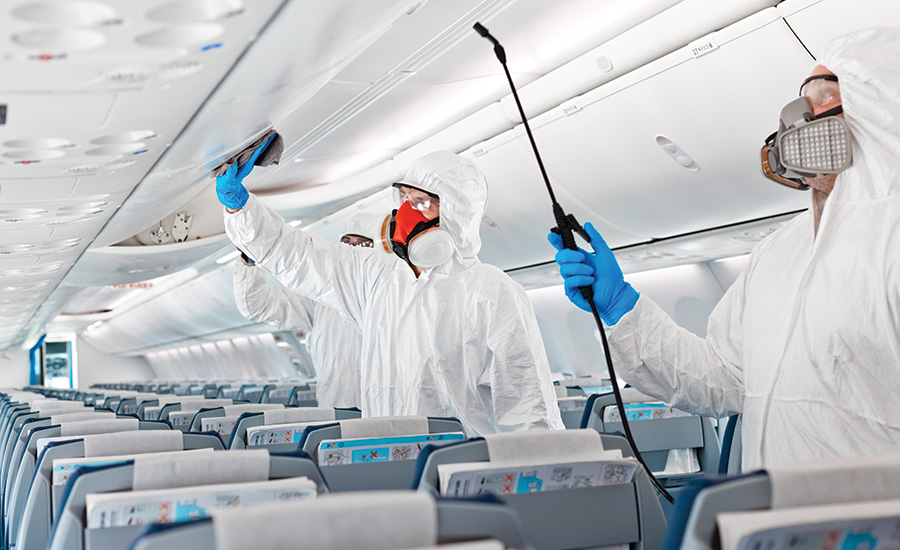
Seth Harrison: Remote estimating/adjusting powered by 3D scanning cameras. It was already becoming more prevalent, but 2020 has forced contractors and carriers to pursue innovative ways to settle claims.
Ben Justesen: Utilizing 360 pictography and the service to have it sketched for you would be the biggest trend. Even though this started before this year, with the pandemic, it has become much more the norm. Along with this is the lack of an adjuster presence and the reliance on this type of technology from the contractor in order for them to adjust the claim.
I have also seen a more consistent increase in labor rates than I ever have. I would contribute this to a couple of factors; more people are educated and actually making their own pricing as well as doing feedback, the RIA advocating on the behalf of contractors directly to Xactware to point out the issues that we are facing on this specific subject.
Michael Pinto: Several trends emerged in this unprecedented, pandemic influenced year. Undoubtedly, the biggest trend was a continuation of one that began several years ago; the restoration industry, particularly the industry associations, cooperating (and even uniting) in addressing changes in the industry. There are many examples of this enhanced cooperation between formerly competing organizations, but two in particular stand out.
The RIA’s decision to start, and fund, an Advocacy and Government Affairs (AGA) group has picked up incredible momentum because they directed their efforts at some of the most pressing problems faced by restoration contractors. That cooperation set the stage for the development of a joint position paper to assist restoration contractors in dealing with COVID 19. Given past industry history and the length of time that it typically takes for the development of consensus standards the fact that they are RIA, IICRC, and the AIHA all cooperated to produce a detailed report directed specifically to the restoration industry is noteworthy. Better yet, the fact that those three groups were able to put five editions out in seven months with the latest information, all while going through an extensive peer review process, is nothing short of remarkable
The move toward a greater level of cleanliness and treatments of buildings for infection control will not dissipate even if the virus that causes COVID 19 does. The recognition that restoration contractors who provide this service for their customers also had to "step up their game" in their own facilities was an eye opener to many in the industry.
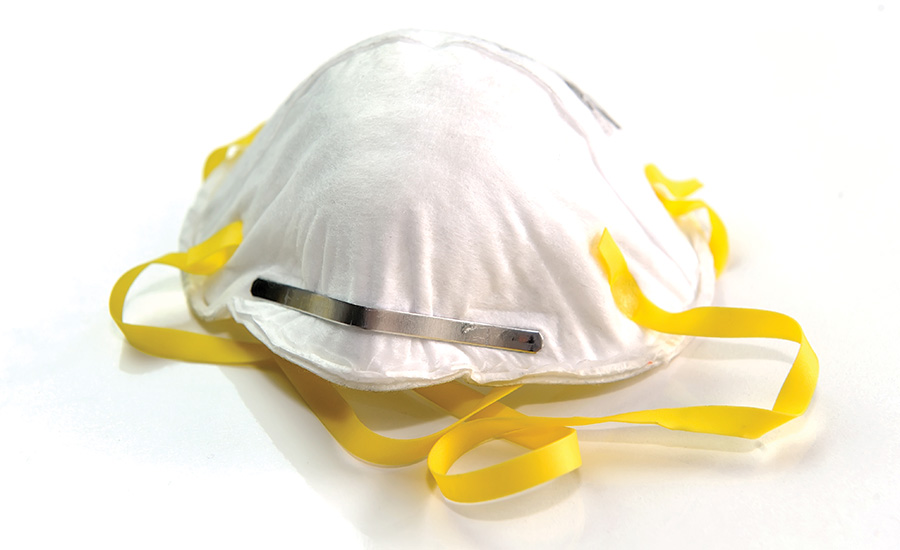
Although the shortage of supplies and equipment is easing, the run-on disinfectants and PPE, particularly botanical-based disinfectants and N-95 filtering face pieces, was surprising to many professionals in the restoration industry who were used to having suppliers fill their orders quickly. Whether organizations revert back to keeping minimal stocks of critical items in their own warehouses and return to relying on the distributors to meet their needs, or bulk up their internal inventories will be interesting to watch.
The use of electronic communication, such as conference calls & meetings, moved from a supplemental form of work discussions to a primary method. It is likely that long-distance meetings, and even training classes and conventions, will continue long after the requirements for pandemic related distancing are lifted.
Katie Smith: Utilizing technology to document more thoroughly and outsourcing estimating to produce estimates faster. This also helps to establish the restorer as a trusted expert for adjusters who are working remotely and not allowed to go out in the field.
Mark Springer: In 2019 at the RIA Convention in Phoenix, attendees used one word to describe the restoration industry- “fragmented”. This has been felt by contractors in a myriad of ways for some time now. Essentially, the frustration stems from a lack of unity and a cohesive voice that speaks for contractor interests. This all started to change with the formation of the RIA Advocacy and Government Affairs (AGA) effort that was also announced in 2019. Looking back over 2020, the impact of AGA cannot be overstated. Through its efforts, transformative progress has been initiated in the areas that affect restorers the most. Some of the highlights include; 1.) Work with Xactimate to advocate for adjustments to the pricing methodology that is fair to contractors and reflective of the marketplace. 2.) Publication of 8 position statements regarding the role of Third Party Consultants (TPC) in the claims process. This culminated in an unprecedented collaboration between RIA’s Restoration Advocate, Ed Cross and leading TPC firms to negotiate positions that are sustainable for the claims industry. And, 3.) Release of a first-of-its-kind, TPA (Third Party Administrator) Scorecard. The TPA Scorecard will serve as a catalyst to provide feedback to TPAs on the contractor experience in their program, and to advocate for their interests in these networks.
While there is a still a lot of work to do, the progress is incredible and has exceeded all of our expectations. As some of the largest restoration firms in North America begin to unite behind RIA in this effort, we can now begin to see the lines of fragmentation begin to mend, and industry unity can become a reality.

What is the biggest lesson restorers should take out of 2020 and into the future?
Dan Cassara: Have a relevance plan. Join something that allows you to grow your business without compromising why you went into to business to begin with. Restorers are owed a tremendous amount of respect for what they do, and they need to align with organizations that showcase this work, rather than break it down.
Edward Cross: Be adaptable. Never stop learning.
Ross Driscoll, Jr.: The importance of a clean and safe work environment.
Pete Duncanson: Every loss we encounter has the potential to be impacted by other factors. COVID was a great example. As essential services we still responded to losses daily yet needed to understand the response impact of COVID. Our customers need to know that we deliver safe and effective services. That our technicians are following practices that reduce cross contamination. These steps go beyond COVID into our everyday losses.
David Dybdahl: The liability insurance coverage for bio-hazards and working under master services agreements deteriorated in 2020. By January 2021 virtually all commercial insurance policies will contain communicable disease exclusions that specifically eliminate insurance coverage for losses associated with a virus. The good news is a handful of insurance companies offer meaningful insurance for the biohazard loss exposures and there is a cleaning protocol that is legally defensible.
Garret Gray: What happened in 2020 is not a fluke, a fad, or a temporary acceleration towards automation and digital workflows. Our industry was already moving in this direction, but COVID will permanently accelerate how fast we get to the "ultimate destination”. Our data strongly suggests that contractors with existing digital workflows did better than their competition so far in 2020. With that said, we also saw a massive influx of those looking to go paperless this year, meaning many are stepping up their game, which will drive more competition in the future.
Seth Harrison: Remote estimating/adjusting is not going away. Carriers and contractors are all looking for the best claim management talent they can find, and you don’t have to live near the office or job site to provide value.
Ben Justesen: Some restorers became very busy and some came to a standstill. The difference was marketing one's company consistently to ensure that the work continues to come in the door. I also believe that many contractors were able to see the type of people and team they had. Did they actually have a culture established that helped them through the uncertainty of the pandemic or did it reveal the holes in processes and people?
Michael Pinto: Restoration work does not stop just because there is a pandemic or other catastrophe. Restoration professionals, both consultants and contractors, need to continue to be flexible in reviewing the products and services that are necessary for their business to thrive. Having to respond to fires, floods, and hurricanes while balancing the risks to occupants and staff from the pandemic conditions has been challenging. Meeting these challenges provides a solid foundation for substantive growth in 2021.
Katie Smith: Be ready for the unthinkable, and be ready to adapt and let go of how you’ve always done things. Be more transparent with your staff, keep them safe by promoting good health and cleanliness, and don’t let “social distance” creep into your culture.
Mark Springer: I would say that the lesson to learn is- the restoration industry is not recession proof. Many have felt that this business is immune to economic downturns or other macro-economic trends. However, many restorers experienced major challenges with the shutdowns related to COVID-19. This serves as a reminder to operate with financial discipline, especially as it relates to cash flow forecasting and receivables management.
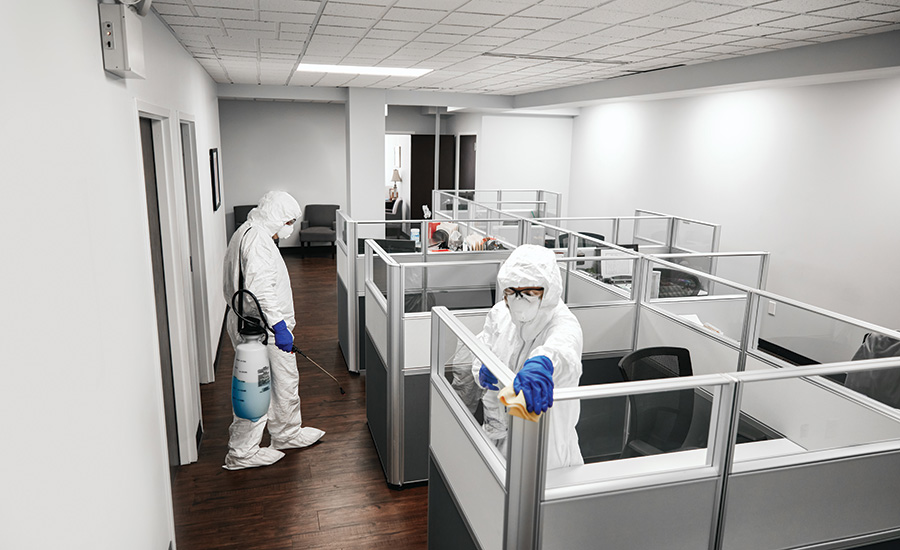
What is the #1 thing contractors need to do to thrive and stay relevant in 2021, and beyond?
Dan Cassara: Answered above. I sincerely believe that independent contractors needs to align with a national brand that helps them grow both in terms of revenue, but as individuals. Some of the most talented restorers in the industry and even most successful still need to be a part of something bigger than themselves. This industry can be a rough road. No sense in them doing it alone.
Edward Cross: Employers should not assume that workers compensation insurance will protect them from all worker claims arising from COVID-19. To minimize exposure to liability claims from employees and customers alike, restorers would be well-advised to develop and implement an organized, systematic way to identify and isolate workers with COVID-19 symptoms and have likely been exposed to the novel coronavirus. Employees should make a formal written commitment to: (1) honestly report symptoms and possible exposures; (2) submit to company health screenings; and (3) strictly comply with company protocols for mask wearing and physical distancing.
Ross Driscoll, Jr.: Communicate! Stay in contact with all of your customers and continue to grow your online and social media presence.
Pete Duncanson: Expand their resource network for supplies. In Q1 we all struggled to have enough supplies (product, respirators, etc.) to allow us to safely respond to losses.
David Dybdahl: The coronavirus will be with us as a threat throughout 2021.
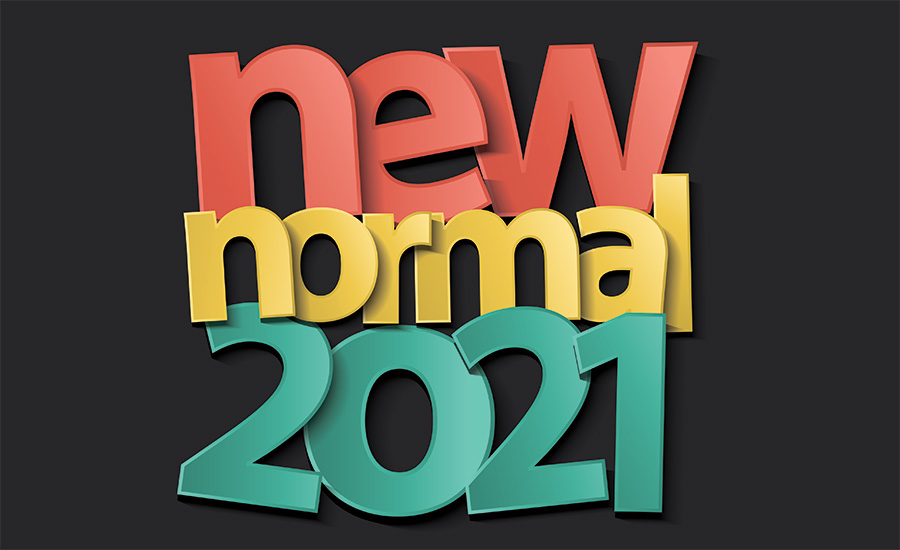
- Adapt your company to manage the corona virus risk.
- Avoid making any claims that a building will be “virus free” for any period of time past you closing the door behind you after applying disinfectants that are known to be effective, in a manner that does not violate Federal laws.
- Never provide a warranty that a building is virus free.
- Follow label instructions for all cleaning and disinfecting materials.
- Check with the state regulators to make sure that you carry all of the needed licenses for the services you perform.
- Make sure your insurance covers you for what you do for a living. In reading of hundreds of liability insurance policies sold to restation firms in 2020 revealed that more than 90% of the policies purchased are functionally defective in covering work involving fungus/mold/bacteria/category 3 water or a virus. More than 90% of the General Liability policies purchased today fail to meet the insurance requirements of the major direct repair networks. In both cases the needed coverage is and was available, often at the same cost as the defective policies that were purchased.
- Select your insurance agent team (retailer and wholesaler) based on their knowledge of your business and your insurance needs.
Garret Gray: Embrace the change that is happening and get ahead of it. Fighting the virtualization process will limit the contractor's ability to compete and thrive in the ever-changing landscape we all operate within. While the speed of change might be overwhelming for some, my message is that it will only get faster and more difficult to catch up. The insurance industry generally moves slow, but COVID changed everything, and the industry won't revert backward. The bright side of all this change is it can streamline the contractor's workflow, increase efficiency, and drive up profitability. The benefits of these changes generally only flow to those who wholeheartedly embrace and incorporate them.
Seth Harrison: Know why you do things the way you do them - if your only answer is “because we’ve always done it this way”, it’s not good enough. Define the value of your actions/process or find a better way of doing it.
Ben Justesen: I believe it is the culture that the company establishes will always be the most important thing that all companies have to figure out to stay relevant. It brings clarity to all the decisions, no matter how good or bad things get.
Michael Pinto: Care about their team enough to keep them safe. For several years one of the major challenges has been finding and keeping good staff. Organizations that take a cavalier attitude regarding the safety of their team members, pandemic or otherwise, will never be in a position to build the sort of esprit de corps that moves companies from mediocre to exceptional.
Katie Smith: Know who your customer is, serve them fiercely, and learn how to maintain relationships without face to face interaction.
Mark Springer: Culture is everything. The companies that are able to recruit and retain talented individuals will accelerate their businesses and thrive in the coming years. As restorers, we can focus our energy on technical expertise. And while this is important, we need to increasingly focus on having companies that are “employers of choice” in our local communities.
Looking for a reprint of this article?
From high-res PDFs to custom plaques, order your copy today!



